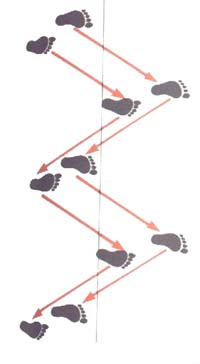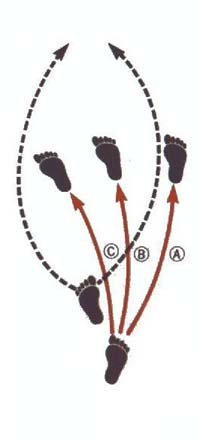Renzoku Waza – Ashihara Karate International – Kaicho Hoosain Narker Sabaki Fighting Karate
What do we mean by Combination?
“Combination” simply means a flowing, continuous attack. In conventional karate this seems to have taken on the simpler meaning of punching or kicking repetitively. However, the true idea behind combination is not simply to punch or kick, but how to put together a series of attacking or defensive techniques into a single, fluid movement. In other words, how to effectively combine various different movements.
Mechanical movement of arms and legs is of no use. You should always imagine yourself in a real fight; picture the opponent moving, blocking, with yourself moving and blocking in response. I like to tell my students, “go ahead, try some free sparring.” Most manage to go on enthusiastically for five minutes or so, then get tired. They can keep up a pattern of about three consecutive attacks, if that much. This simply shows that they are not simulating a real fight situation in their everyday practice.
So don’t bother practicing if you don’t give your brain a workout at the same time. THINK – how are you going to beat your opponent? PRACTICE multiple patterns of attack and evasion. PLAN. This is what we mean by “combination.”
Step-pattern for combination
The Zig Zag step

The stepping pattern in the diagram is fundamental to the combination. The steps are made sharply in a diagonal direction, forward and backward. As you practice this step, you will gradually pick up the timing of kicks, moving both forward and backward. Also practice paying attention to where your feet come down after a kick.
You might find it easier to acquire this step-pattern if you practice it on a staircase, or with a jump-rope. Also note that a slightly narrower stance is easier during a continuous attack.
Transition steps

The lines in the drawing show various steps to move from the basic stance into position for a kick.
A – Outside line : the most useful inside step; it enables you to attack from the side, making full use of the power of the hips.
B- Direct line : allows for a quick shift of weight. However, this movement is also the easiest for the opponent to read.
C – Inside line : utilises the inherent power of the knee, and also makes it easy to move into position for the next attack. However, it lacks stability and leaves you open to leg sweeps.
The length of each step will vary depending on the distance to your opponent.
